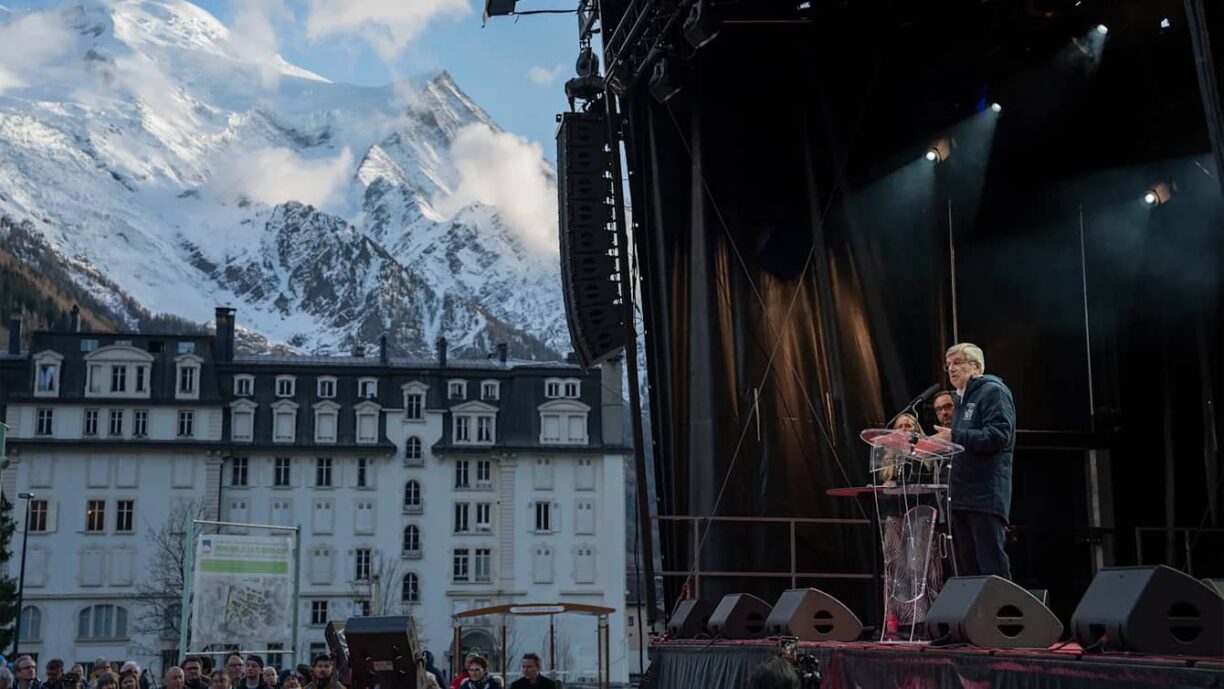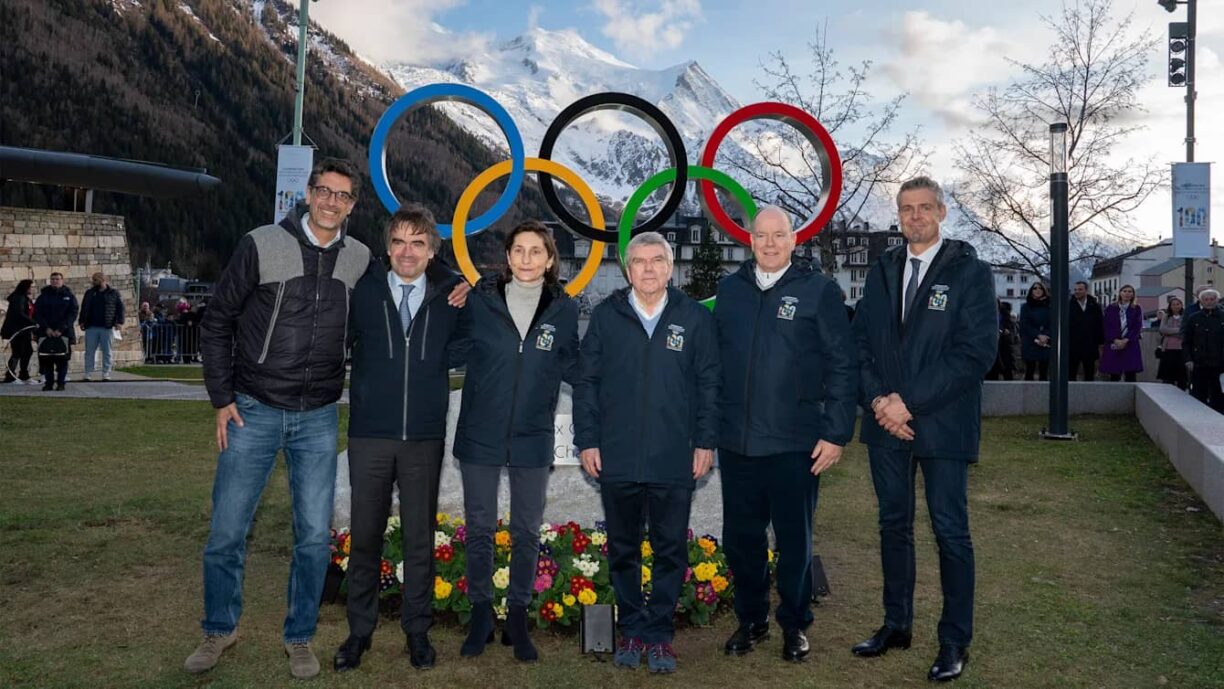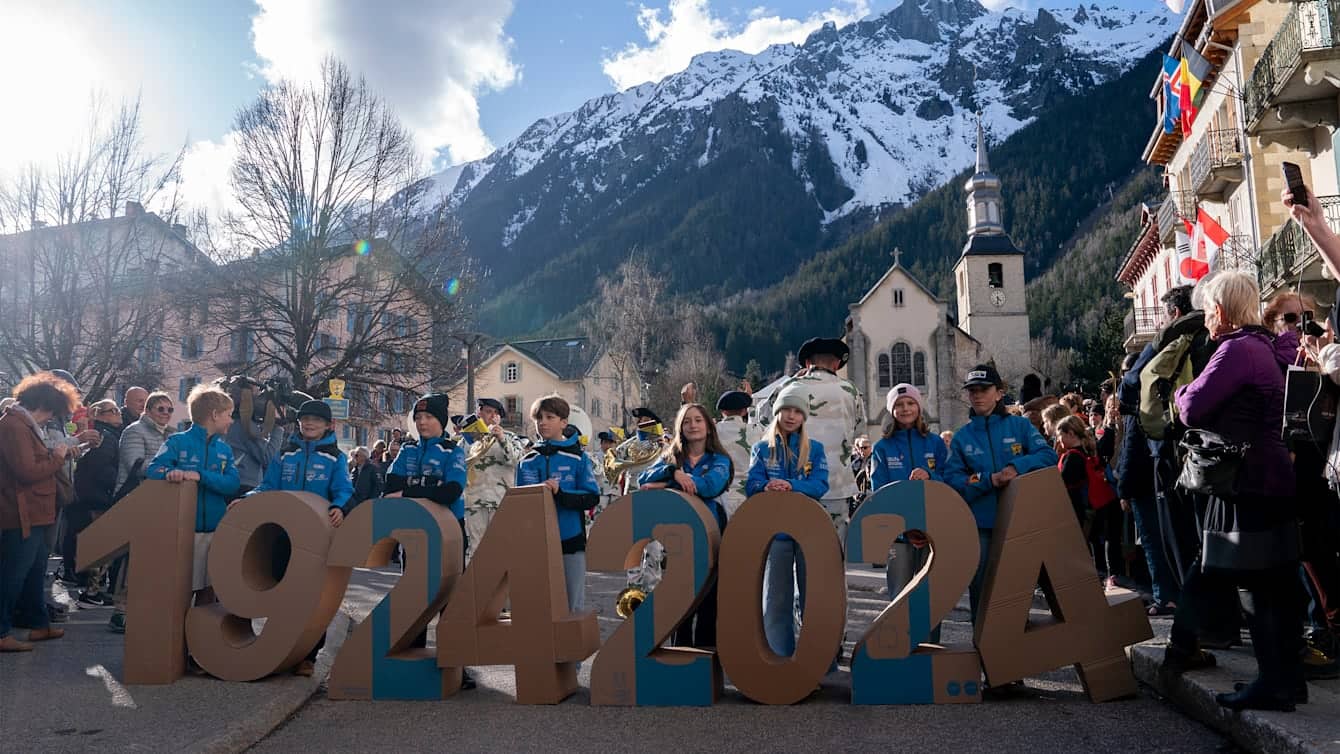IOC President Thomas Bach marked the 100th anniversary of the first Olympic Winter Games, Chamonix 1924, this weekend, as he took part in a day of official ceremonies and cultural festivities in the legendary Alpine town at the foot of Mont Blanc.
President Bach was joined by IOC Member HSH Prince Albert II of Monaco, Mayor of Chamonix-Mont-Blanc Eric Fournier, French Minister of Sport and the Olympic and Paralympic Games Amélie Oudéa-Castera, and Marie-Françoise Potereau, Vice-President of the French National Olympic Committee, in charge of Paris 2024 and Gender Equality – amongst other local and regional dignitaries.

“This first edition of the Winter Games was a real success among the people, and the media for its time, thanks to the determination, commitment and enthusiasm of the organisers and the people of Chamonix.
The beauty of your mountains and the magic of winter sports won over the whole world,” said IOC President Thomas Bach, addressing the local population gathered at the event.
“One hundred years on, the Chamonix Games are continuing to inspire people in the best possible way, through the staging of an event that left a sustainable legacy to future generations.”
He added: “I would like to warmly thank the town of Chamonix-Mont-Blanc, the people of Chamonix, and its Mayor, Mr Fournier.
Thank you for perpetuating this 100-year-old legacy, and for bringing together so many of your citizens to bring the Olympic spirit to life.”

A number of Olympians from Chamonix joined the centenary celebrations, which culminated with the unveiling of the Olympic rings at the entrance of the Parc Olympique” – the historic grounds of the 36,000m2 ice rink used for the 1924 Games.
During the celebrations, guests visited a temporary exhibition, Chamonix 1924: The Invention of the Olympic Winter Games, which offered an in-depth look into the organisation of the first Olympic Winter Games.
Chamonix Mayor Eric Fournier also presented the IOC President with a curling stone that was used during the 1924 Games.
The historic gift will be added to the collections of the Olympic Museum in Lausanne, Switzerland.
The first Olympic Winter Games took place from 25 January to 5 February 1924 and saw 258 athletes from 16 national teams compete in 16 events in nine sports/disciplines: bobsleigh, cross-country skiing, curling, figure skating, ice hockey, military patrol, Nordic combined, ski jumping and speed skating.
The event was initially an integral part of the Olympic Games Paris 1924, and was known as the “Winter Sports Week of the VIII Olympiad”. In 1926, it was retroactively recognised as the first edition of the Olympic Winter Games.
Chamonix 1924 was a landmark moment in the development of the Olympic Movement, and a springboard for the growth of the French resort and winter sport.
The Games boosted Chamonix’s national and international reputation as a tourism destination, which today has over eight million overnight visitors each year spread equally between the winter and summer seasons.
Including this first edition, 24 editions of the Olympic Winter Games have been hosted so far by 21 regions and 13 countries.
Over the years, they have helped introduce winter sports to wider audiences, for professionals and amateurs alike, and have propelled their hosts onto the global map of world-class resorts and destinations, bringing tourism, economic and community benefits.
The 100th anniversary celebrations began with the “Tournée des Drapeaux” in February 2023 and will culminate with the Mont-Blanc stage of the Paris 2024 Olympic Torch Relay on Olympic Day, 23 June 2024.
To find out more about the history of the Olympic Winter Games, their evolution and the legacies they have created for their hosts, see here.





